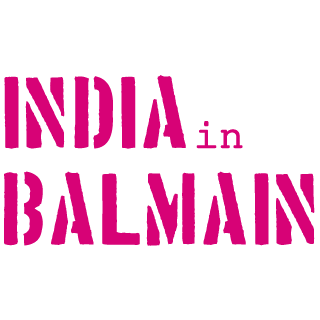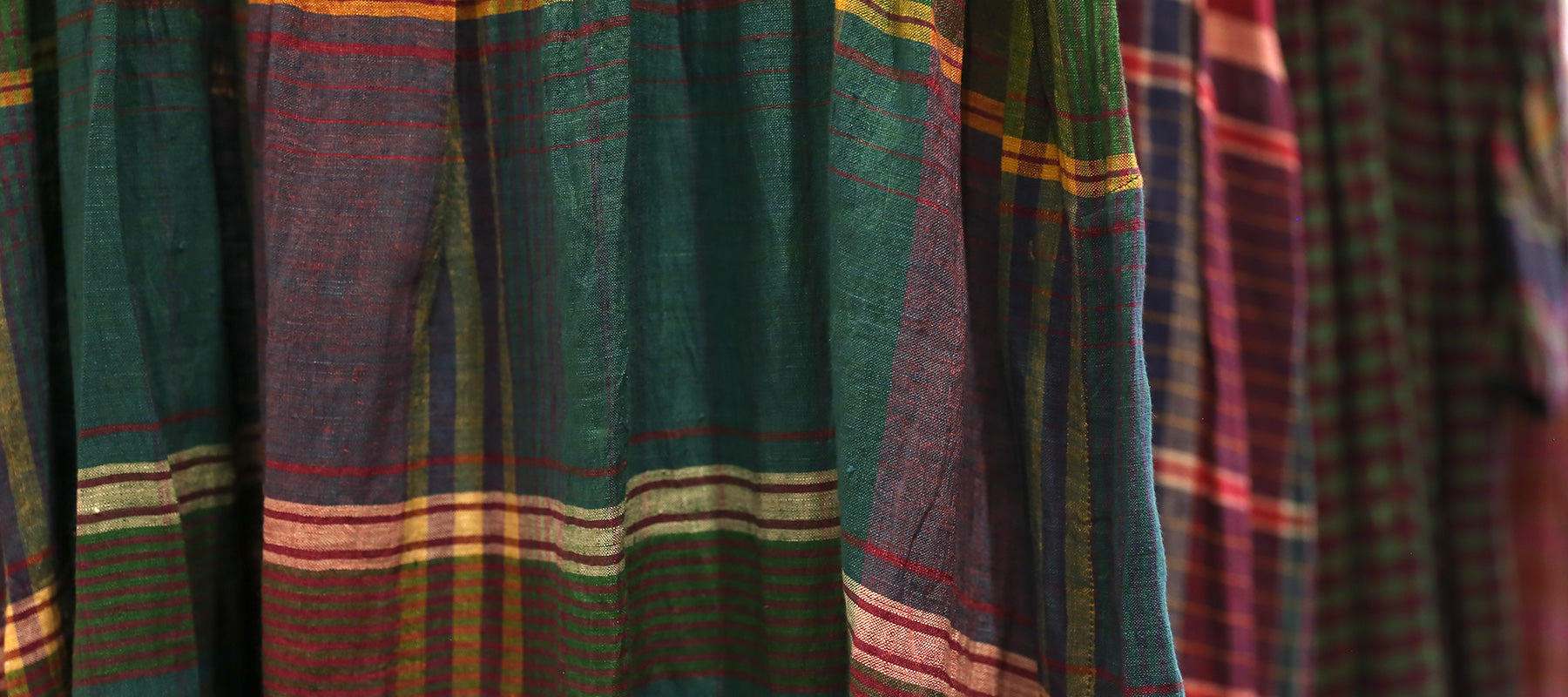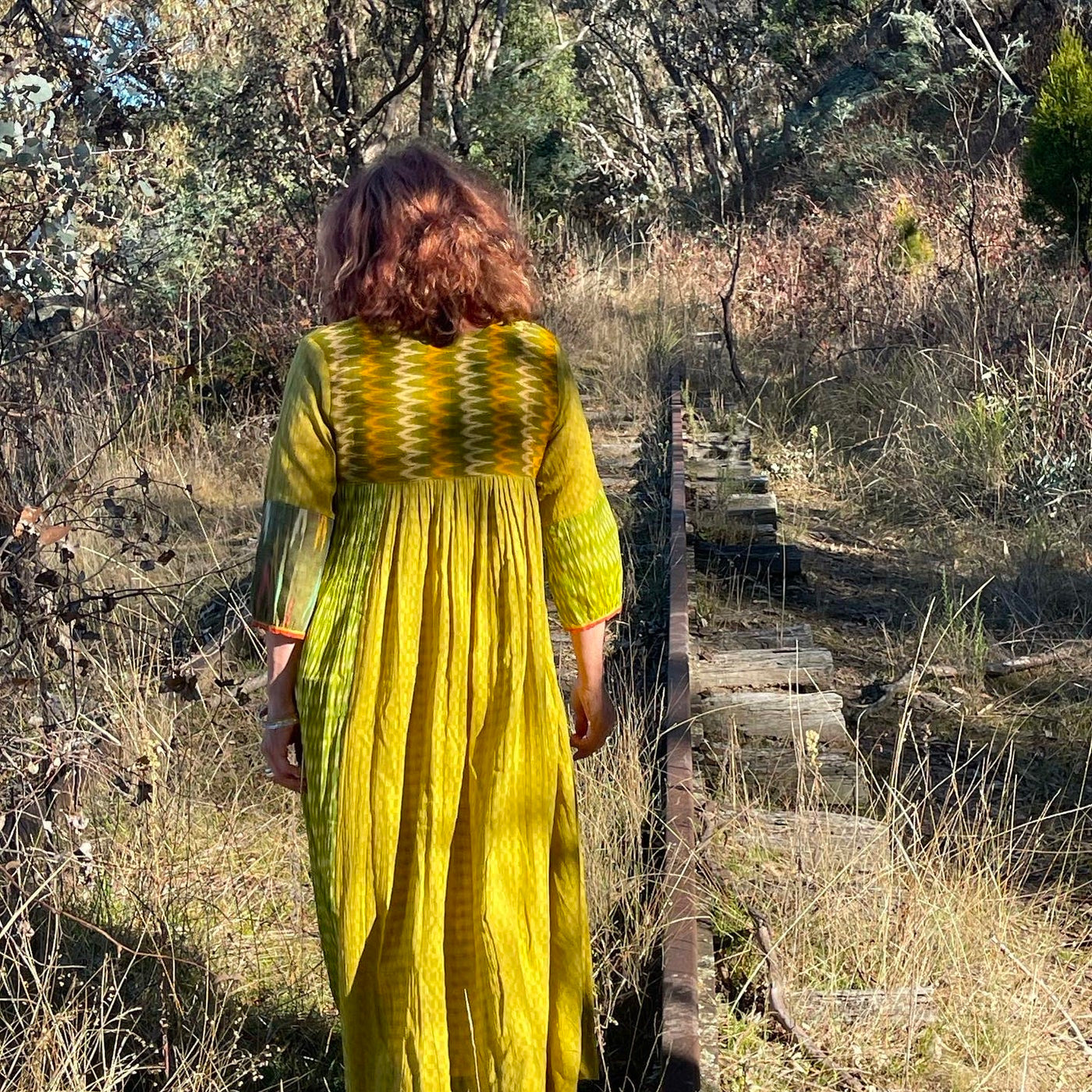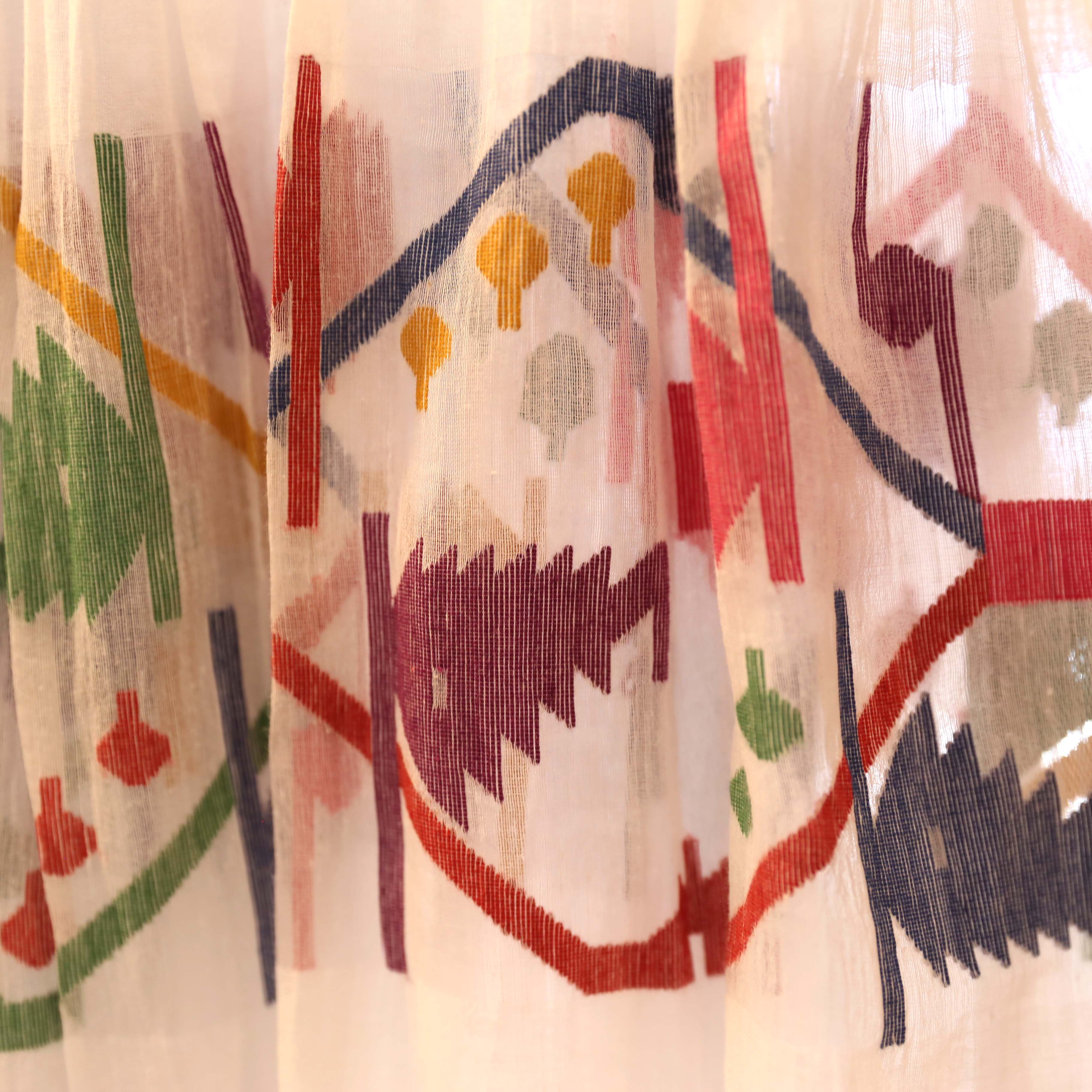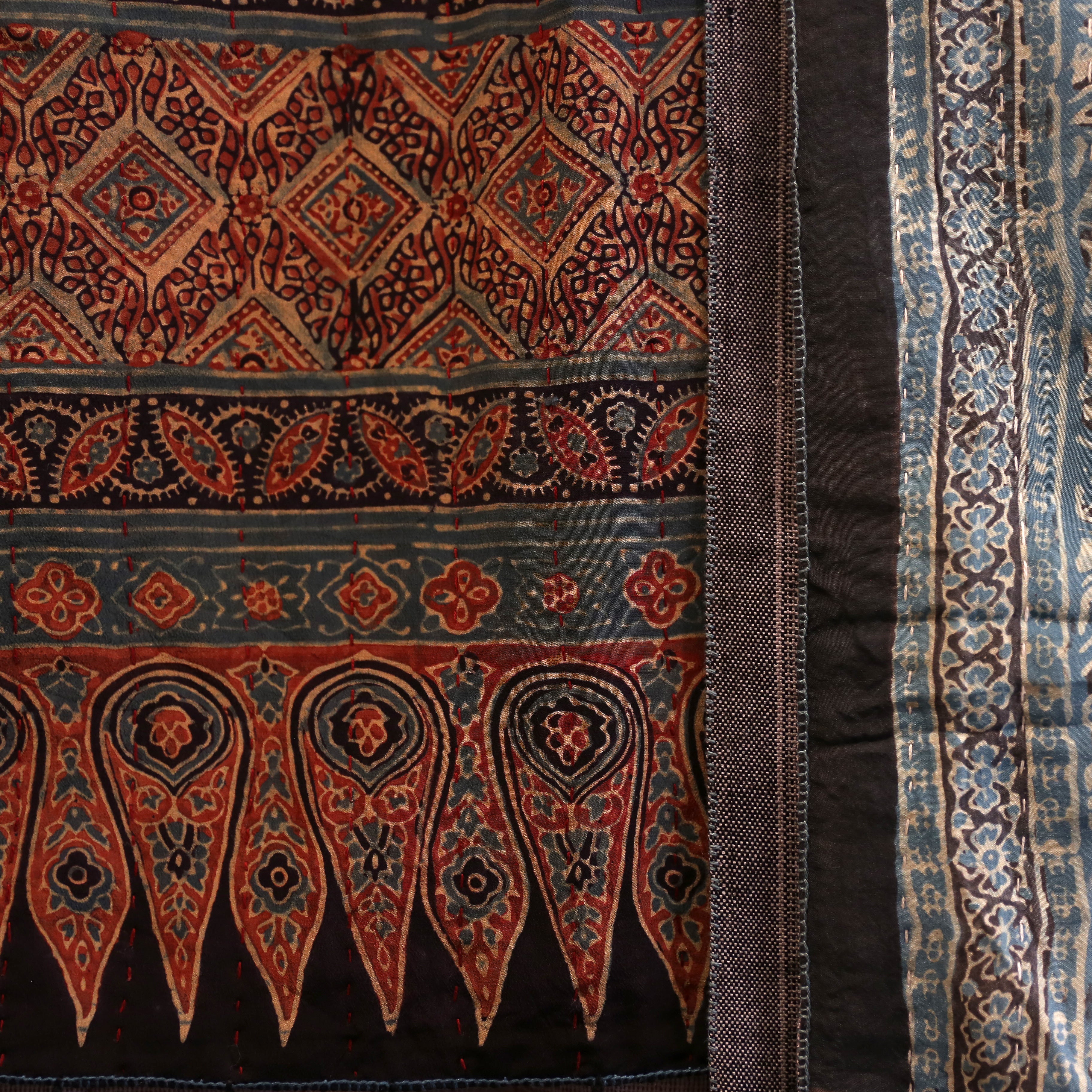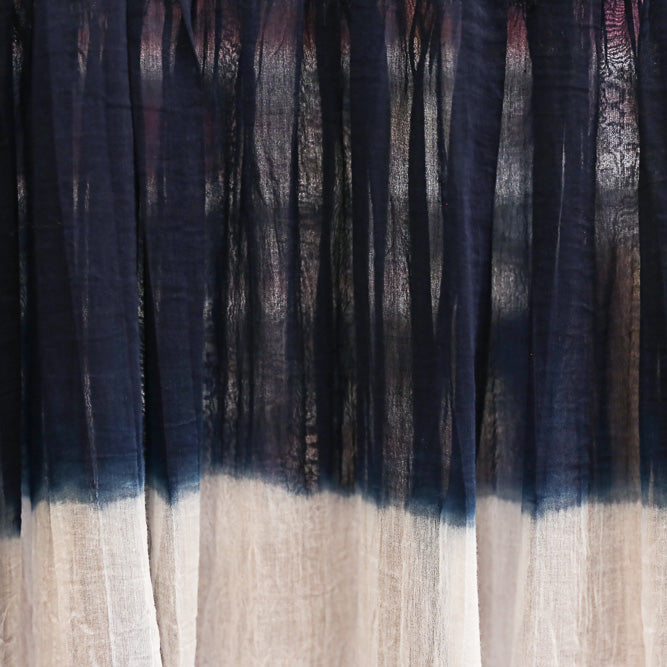Woven ⋮ Handloomed
Handspun and handwoven
Handspun and handwoven is so much more than simply a beautiful type of fabric. It is an idea of cultural self-sufficiency with deep roots in the Indian identity.
In its essence, handspun threads and handwoven fabric are created through personal labour without industrial machinery. Handspun and handwoven thus harkens back to the centuries when India produced the world's most prestigious cloth. But with its emphasis on manual skills and hand production, handspun and handwoven also had a central role to play in countering the displacement of family life that took place during industrialization.
Industrialization
Within Great Britain, industrialization produced tensions between textile workers and mill owners. The luddite riots against mechanized forms of spinning, weaving, and knitting are today largely remembered for adding the word we use to depreciate ourselves whenever we fail to work one of our gadgets. The unrest was real, however, and troops were mobilized to put down the mobs. With the riots quelled and resistance to industrialization largely subdued, British mills were soon tooling up in an effort to break into one of the largest markets on earth – the Indian textile market.
As an anti-industrial movement, the luddite riots (and later Swing riots against threshing machinery) were relatively small and did not divide the country. Within India, by contrast, anti-colonialism and anti-industrialism were perceived as synonymous. In what must have been one of the largest market takeovers in history, cloth for the Indian market was no longer being woven by artisans living in the subcontinent; instead, India exported raw cotton to England, where it was transformed into thread and cloth and sold back to the Indian public. As in England, Indian cottage industries and village-producers could not compete with industrial capacity.
Traditional handloom is a remarkably flexible technology. Its great advantage lies in the production of embellished fabrics (supplemental wefts, jamdani’s, single and double ikats) and weaves of extraordinary fineness such as muslins. Because the operator has control over each throw of the shuttle, continual fine adjustments can be made as the cloth is woven. The weaver can also start and stop as each thread is adjusted or supplements are added. The mechanism of the loom–almost always worked with bare feet–permits the weaver to judge by feel when it is too damp, or too dry to continue working with extremely fragile fine-spun cotton.
Handspun threads and handwoven fabrics may be made from any fibres, but the term usually indicates cotton. Handwoven fabrics may contain light variations that are to be celebrated and are a reminder of the handcraft that created the garment.
INDIA in BALMAIN
INDIA in BALMAIN seeks to source wherever possible, handloomed clothes and textiles. The entire INJIRI Collection is all handloomed natural fibres - organic cotton, cotton, silk, linen and wool
